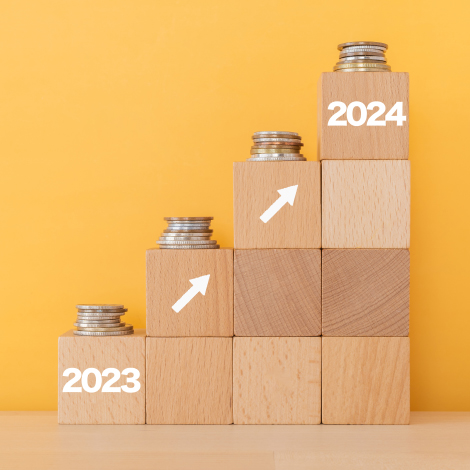Takahide Kiuchi's View - Insight into World Economic Trends : Japan’s Economic Downturn Heads into its Second Phase; Will Recovery Be U-Shaped or L-Shaped?
#Market Analysis
#Takahide Kiuchi
Jul. 09, 2020
The initial optimism that the global economy would make a “V-shaped” recovery as we curbed the spread of Covid-19 infections has now been totally eclipsed, and even the notion of a “W-shaped” recovery is now in retreat due to the second wave of infections. With many countries unable to get the pandemic under control, the prospects are growing that the economic recovery will be “U-shaped”—or even “L-shaped”—and will lag for quite some time. The same prognosis is true for Japan as well.
The economic deterioration is spreading from the non-manufacturing sector to the manufacturing sector
According to the Short-Term Economic Survey (June survey) published by the Bank of Japan on July 1, the diffusion index (DI) for current economic conditions for large manufacturers was “-34”, reflecting a dramatic 26-point decline from the previous survey conducted in March. The DI is at its lowest level in nearly 11 years since 2009 in the aftermath of the Lehman Brothers failure.
Even in the non-manufacturing sector, which had already verifiably seen a severe downturn in the March survey, business sentiment worsened once again by a large margin. Not only did the deterioration in business confidence become even more intense in the restaurant, service, and personal services industries, but we also saw the downturn spread to a wider variety of industries such as real estate and information services.
In the previous survey, the DI decline was even more severe for the non-manufacturing sector (all sizes) than the drop in DI for the manufacturing sector (all sizes), but with this latest survey, the opposite was true. Given the rapid deterioration in export activity, for instance, it is clear that we have entered a new stage, with the manufacturing sector now leading the decline in business sentiment.
The focus is on the ripple effects of automobile production adjustments
The area within the manufacturing sector where the DI downturn compared to the last survey is most pronounced is automobiles (-55 points). This trend can be clearly confirmed by the Indices of Industrial Production as well. The figure for industrial production in May (preliminary) revealed a drastic deterioration of 8.4% from April, following the 9.8% month-on-month decline that was seen then. This development is clearly represented in the DI downturn for the manufacturing sector seen in the latest Short-Term Economic Survey. Even the Manufacturing Forecast Index for June shows little change on the horizon, up just 0.2% from the prior month according to the corrected figure from the Ministry of Economy, Trade, and Industry.
In May, production in the automobile industry was down 23.2% from April, with this being the most significant drop among all 15 industry types. Although industrial production in the period from April to June is expected to experience another major drop of around 17% from the previous period, the proportion of this decline accounted for by automobiles will conceivably be half or greater.
The automobile industry is quite extensive, and its production adjustments exert adjustment pressure on many other industries. That fact is represented quite clearly in this latest survey as well, in the economic downturn for the steel industry.
According to the Cabinet Office’s Input-Output Table, the “production inducement coefficient”, which indicates the per-unit magnitude of production increases for the overall economy in response to an additional unit of production in a certain industry, stood at 2.30 for transportation machinery including automobiles, which was the largest among all industry types.
Worsening domestic economic conditions prolonged by capital stock adjustments
In this latest survey, the fact that the deterioration of the corporate management environment caused by the Covid crisis has verifiably led to adjustments in employment and capital stock is a crucial point that we cannot overlook. This means that the economic downturn has now entered its second stage.
Business fixed investment plans for FY2020 were generally revised downward as well. Although plans for large corporations showed somewhat increased year-on-year growth compared to the previous survey done in March, in light of the ordinary revision pattern in which the growth rate is significantly raised between the March and June surveys, one could say that this essentially amounts to a substantial downward revision. The investment plans of SMEs also saw downward revisions, with the rate of growth from the previous fiscal year breaking significantly from the usual revision pattern. In light of the foregoing, we should likely view capital investments for FY2020 as having turned out to be negative.
That said, although the employment conditions diffusion index (DI) in the BoJ’s Short-Term Economic Survey (all sizes and industries, “excess” minus “shortage”) showed a three-point increase in the March survey, signifying only a minor deterioration, this last survey showed that it was up 22 points, which was an unexpected and dramatic downturn. New recruitment plans also showed a rise of just 0.2% from last fiscal year for FY2020 and a 5.6% year-on-year decline for FY2021 (total for all industries/all sizes), reflecting a highly restrained outlook for the near future.
The Japanese economy is heading for a “U-shaped” or an “L-shaped” recovery
This Short-Term Economic Survey confirmed that the economic downturn has entered a new phase in which the emphasis has been shifted from the non-manufacturing sector to the manufacturing sector. Further, having reached this second stage, where we will be feeling the full-scale impact of production adjustments in the auto industry and of employment and capital stock adjustments by companies, we can now say that the economic adjustments precipitated by the Covid crisis is not merely something transient, but is rather at heightened risk of becoming even more serious and protracted.
In fact, a look at the confidence index DI reveals that both the manufacturing sector (all sizes) and the non-manufacturing sector (all sizes) are projected to deteriorate even further (-1 point and -3 points, respectively). The reality is that we have yet to see any signs of business sentiment bottoming out.
The probability of a scenario wherein economic conditions pick back up rapidly as the Covid-19 pandemic gets under control is already rather low. As with other countries, the Japanese economy is definitely poised to make either a “U-shaped” or an “L-shaped” recovery marked by a prolonged bout of lagging economic activity.







